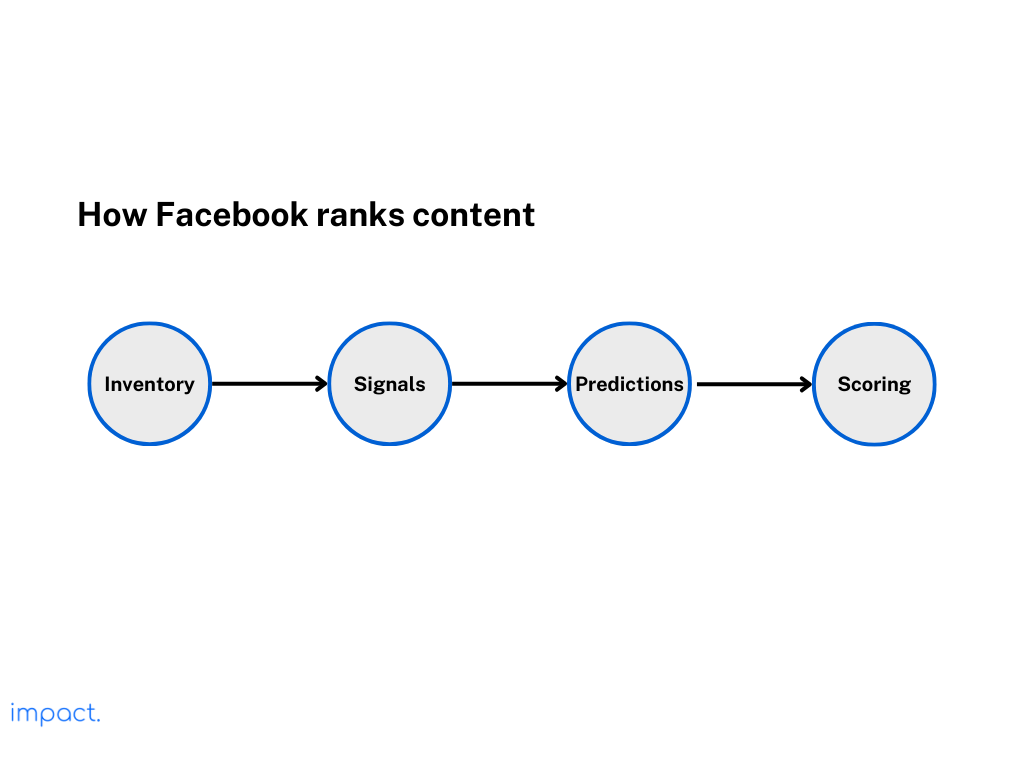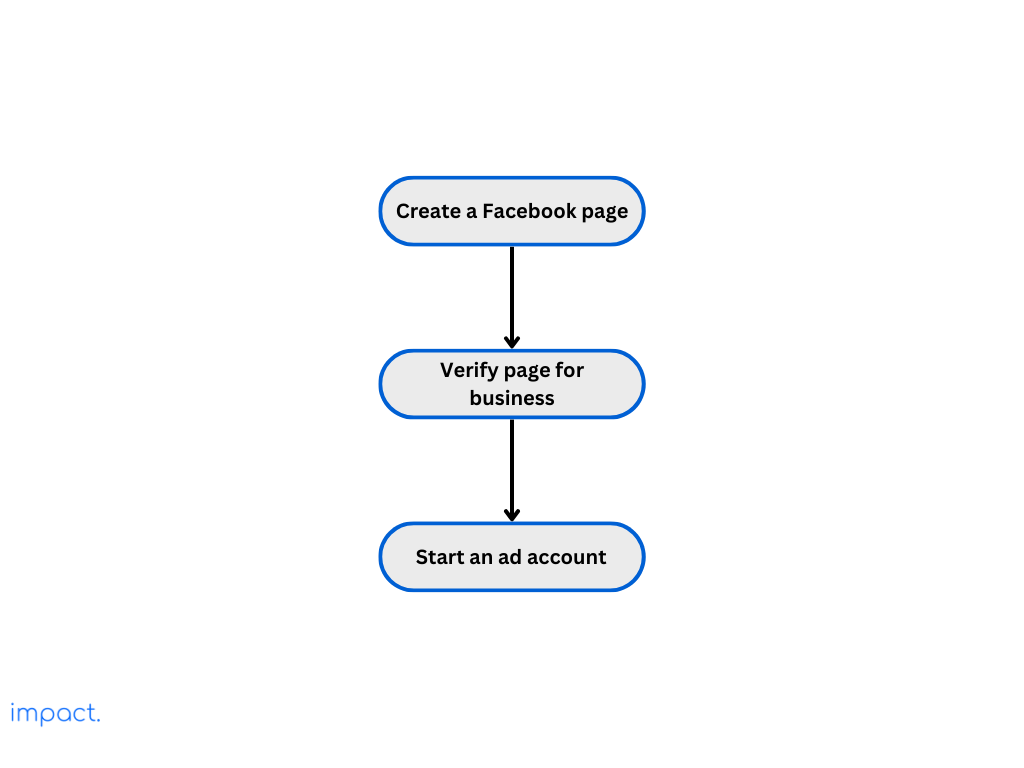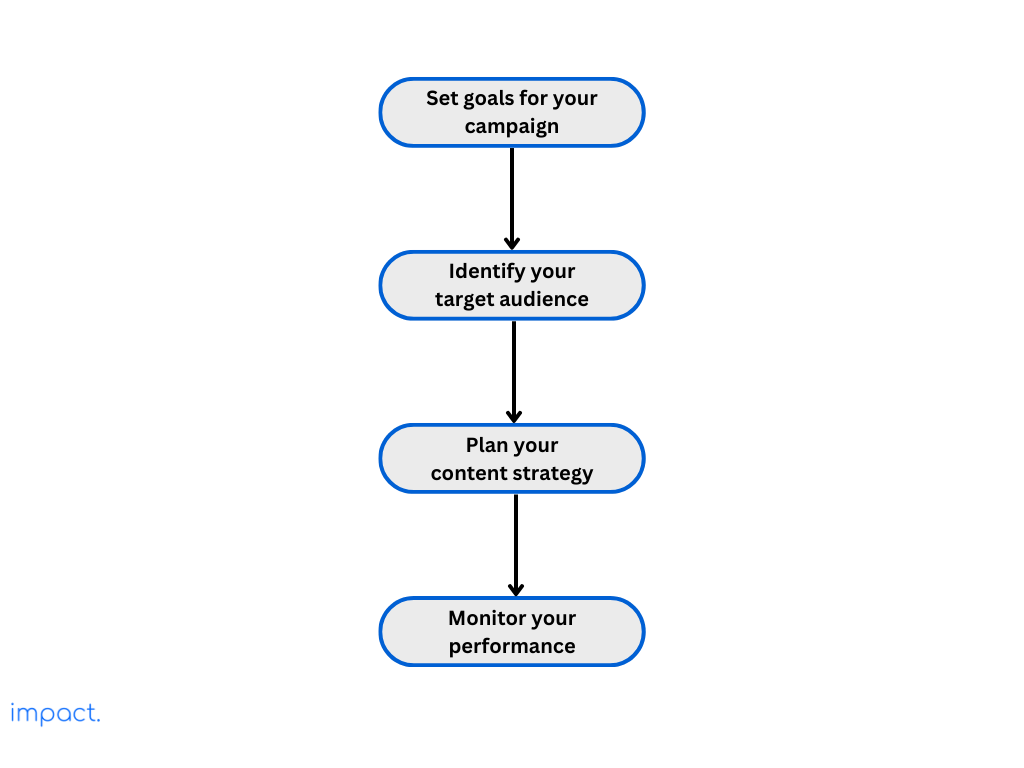Kanban: Definition, 6 Rules, and its Benefits
Kanban is a crucial part of the Just in Time (JIT) system, which we discussed…
Sean Thobias
May 17, 2025In our earlier guide, we compared social media marketing to throwing a party:
Let’s now focus on Facebook’s role in social media marketing strategies, emphasizing how it helps you reach your audience better. We aim to provide valuable tips and tactics for making the most out of Facebook in your marketing efforts.
To succeed in Facebook marketing, grasp its structure and operations. Facebook’s algorithm rates content, including Feed posts and Reels, to deliver the most fitting content to users, factoring in demographics, interests, and viewing history.
Facebook engineers aim for user engagement, reflected in the algorithm’s profiles, pages, and content scoring. Higher engagement boosts a piece’s Facebook algorithm score, leading to more visibility, while lower engagement reduces its exposure.
Facebook ranks content in a four-step process:

Facebook remains a major force in social media marketing, boasting three billion monthly active users as of mid-2023, making it the most significant platform worldwide. With such a vast audience, reaching new prospects, converting them into customers, and repeating the cycle becomes more straightforward.
The expansive reach of Facebook enables you to scale up campaign expenditure without concerns about reaching a limit. Implementing a well-planned strategy allows for a gradual increase in spending while maintaining cost efficiency and consistently generating leads.
Facebook advertising offers a decisive advantage: pinpoint targeting of your desired audience. With Facebook’s tools, you can zero in on specific demographics and interests, ensuring your message reaches those who matter most to your business.
Entrepreneurs can finely tune their advertising campaigns by segmenting their audience based on demographics. Facebook’s “Audience Insights” tool provides valuable data on your page visitors and followers, aiding in effective targeting.
Facebook advertising is great because it activates a brand across the entire sales funnel. Whether you want more people to know your brand, think about buying it, or buy it, Facebook ads can help.
You get different types of ads on Facebook for different marketing goals. You can use images, videos, carousels, slideshows, or dynamic ads, depending on what best shows off your product/services.
Advertising on Facebook is cheaper than TV or print ads, making it great for small and medium-sized businesses with tight budgets. With Facebook, you can reach a broader audience for almost half the price of traditional ads.
Facebook’s ad platform lets businesses control their budgets and bidding tactics, maximizing their ad spend. When done right, Facebook ads can bring in better returns and conversions than traditional advertising.
Businesses can connect directly with their audience on Facebook by sharing posts, responding to comments, and engaging in messages. This interaction builds trust and community, strengthening customer relationships.
Instead of solely relying on ad campaigns for new customers, organic marketing on Facebook ensures long-term revenue and fosters an engaged follower base. Consistency is vital — maintaining an active brand presence sets you apart from brands that neglect their Facebook pages.

Verifying your page isn’t necessary, but it boosts your business’s credibility. To get verified:
If you want to make the most of Facebook for your business, having an ad account is essential, especially if you’re considering spending money on boosting posts or running campaigns. Here’s a simple guide to setting up your ad account for your Facebook Page:

Establish clear and measurable goals before starting any marketing campaign. Ensure your goals are specific, achievable, relevant, and have a deadline (SMART).
Here are some typical Facebook campaign goals:
To find out who’s interested in your Facebook content, look at the buyer personas you’ve created for your overall marketing plan. These personas depict your ideal customers and aid in comprehending your target audience.
Facebook offers tools like Audience Insights to help you understand your audience and competitors. It gives you information on demographics and behaviors, effectively helping you tailor your content and ads.
Create a content plan that aligns with your objectives and resonates with your audience. Here’s what you should prioritize:
Monitor your campaign to ensure your Facebook ads work well and bring the most value. Utilize Facebook Ads Manager and Insights to monitor essential measures like the number of people reached, engagement levels, click-through rates (CTR), conversion rates, and return on investment from your ads.
Regularly review your campaign data to identify trends, successes, and areas for improvement. Utilize this information to adjust your target audience, messaging, visuals, and budget allocation, ensuring improved ad performance.
91% of consumers like interactive and visual content more than just reading or seeing still images. Attention-grabbing visuals are crucial to stand out, especially on social media platforms like Facebook.
Boost your posts by investing in professional photography or crafting visually engaging graphics. Clear, sharp images and videos are crucial to captivating your audience and sparking interaction.
A solid Facebook content plan is crucial to succeed online and with social media ads. Consistency is vital for reaching more people and boosting your online presence through Facebook.
Make a content calendar to organize your Facebook updates, planned content, and contests or giveaways you want to run. Posting on Facebook isn’t just about hitting “Post” — timing matters too, so think about when your audience is most active.
Facebook favors active users, so if you engage regularly with your personal and business pages, your posts are more likely to appear in your followers’ news feeds. Interacting with your audience boosts your visibility on Facebook and strengthens your relationship with your followers and customers.
Avoid using tactics solely to garner comments, tags, and likes, as Facebook now penalizes such behavior. Instead, spark discussions by asking questions and initiating debates relevant to your brand, but avoid being overly controversial.
User-generated content (UGC) makes your marketing more genuine and trustworthy. Ask your audience to share their thoughts, reviews, and pictures about your products or services.
Feature UGC on your page and organize contests to motivate your audience to create and share content about what you offer. This showcases happy customers and encourages others to connect with your brand.
Boosting your posts on Facebook can expand their reach to more people, extending beyond your current followers. Facebook ads, including boosted posts, reach over 72% of monthly active users, nearly 40% of the world’s population, considering Facebook’s 3 billion users.
The reach of your boosted post is determined by how you target and how much you spend. To maximize your reach, pinpoint which content performs well and set aside a budget to promote it to a specific audience based on age, interests, and behaviors.
Keep up with Facebook’s algorithm, features, and rules to adjust your marketing plans. Check official announcements and trustworthy sources to stay on top of updates.
Constantly adapt your strategies to make the most of new opportunities and deal with any challenges from platform changes. Keep an eye on analytics to improve your approach and stay competitive.
Excelling in Facebook marketing means you must grasp its complex algorithms and focus on creating captivating, top-notch content. Consistent effort in sharing valuable content that resonates with users is critical for boosting your presence and expanding your reach on the platform.
Moreover, integrating a solid Customer Relationship Management (CRM) system can be immensely helpful in handling customer interactions and enhancing loyalty. With CRM tools, you can monitor customer actions, tailor interactions, and foster lasting connections, which all contribute to refining your social marketing approach.
McDonald, J. (2022, July 4). Social Media Marketing Workbook: How to Use Social Media for Business.
Impact Insight Team
Impact Insights Team is a group of professionals comprising individuals with expertise and experience in various aspects of business. Together, we are committed to providing in-depth insights and valuable understanding on a variety of business-related topics & industry trends to help companies achieve their goals.
Ask about digital transformation, our products, pricing, implementation, or anything else.
We are excited to be part of your transformation journey from day one.